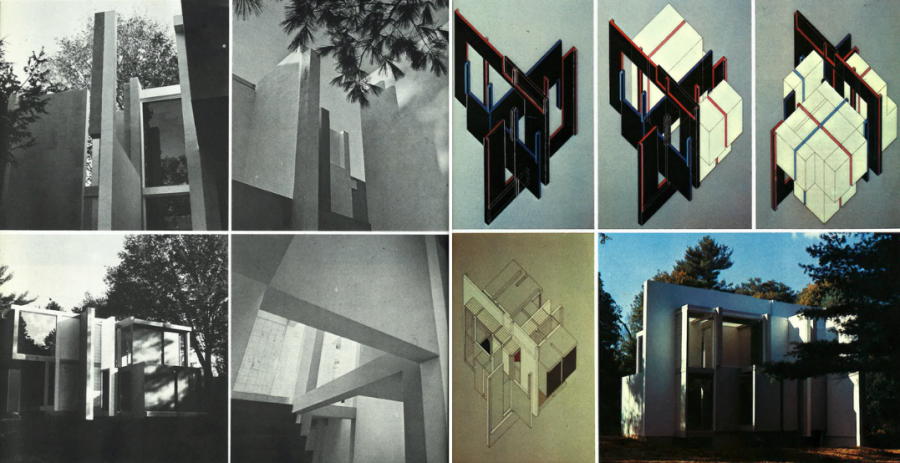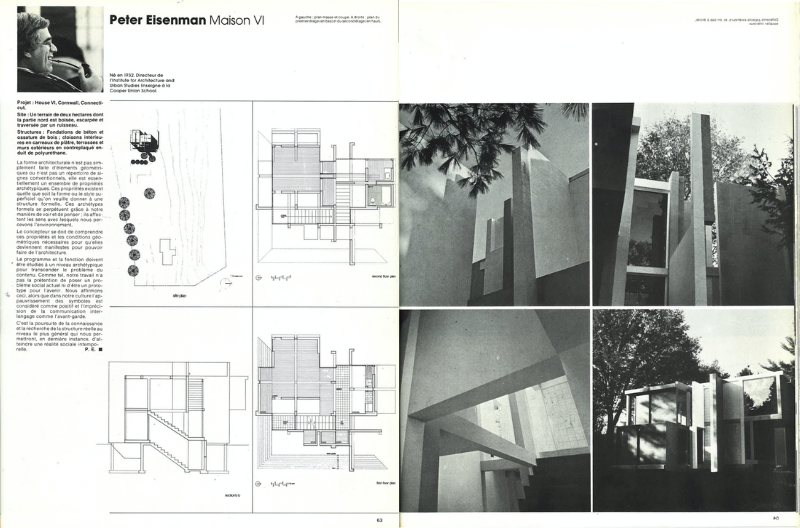AA Retro: In 1976, Peter Eisenman presents his House VI
In 1976, AA devoted issue 186 to the city of New York. The dossier featured the New York architect and theoretician Peter Eisenman. Eisenman, who at the time was gradually establishing himself as a major figure in deconstructivism, presented his latest project: House VI. This 2,000-sq.m holiday house had been completed a year earlier and was part of an experimental series of thirteen houses through which Eisenman developed his fundamentally conceptual vision of architecture.
A look back at the emergence of an American architectural process with multidisciplinary inspirations – from Nietzschean philosophy to Chomsky’s work in linguistics.
Peter Eisenman

Project: House VI, Cornwall, Connecticut.
Site: A two-hectare site, the northern part of which is wooded, steep and crossed by a stream.
Structures: Concrete foundations and timber frames; interior partitions in plasterboard, terraces and exterior walls in polyurethane-coated plywood.

Architectural form is not simply made up of geometric elements or a repertoire of conventional signs; it is essentially a set of archetypal properties. These properties exist regardless of the form or superficial style that we wish to give to a formal structure. These formal archetypes are perpetuated by the way we see and think; they affect the senses with which we perceive the environment.
The designer needs to understand these properties and the geometric conditions necessary for them to become manifest in order to make architecture.
Programme and function must be studied at an archetypal level in order to transcend the problem of content. As such, our work does not claim to pose a current social problem or to be a prototype for the future. We are saying this at a time when in our culture the impoverishment of symbols is seen as positive and the imprecision of inter-language communication as avant garde.
It is the pursuit of knowledge and the search for real structure at the most general level that will ultimately enable us to achieve a timeless social reality.
Read the full 1971 article by clicking on the scan below:





